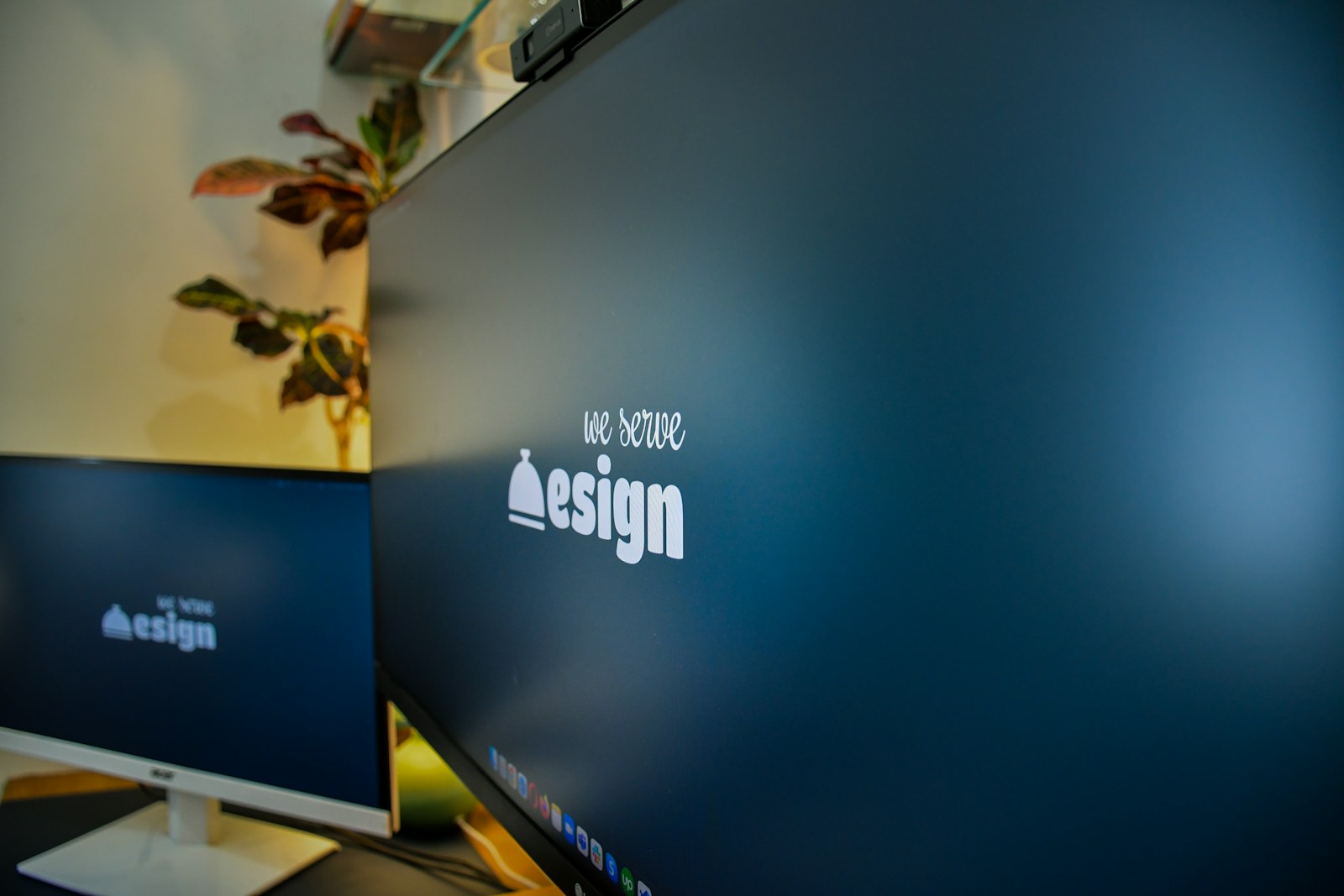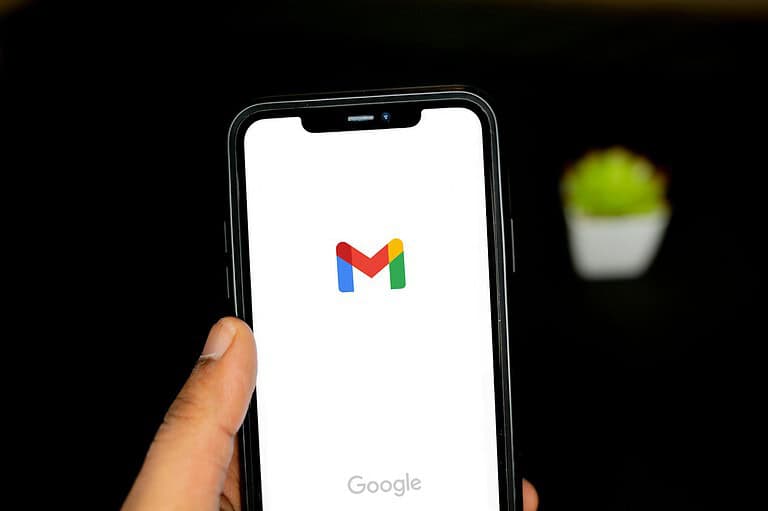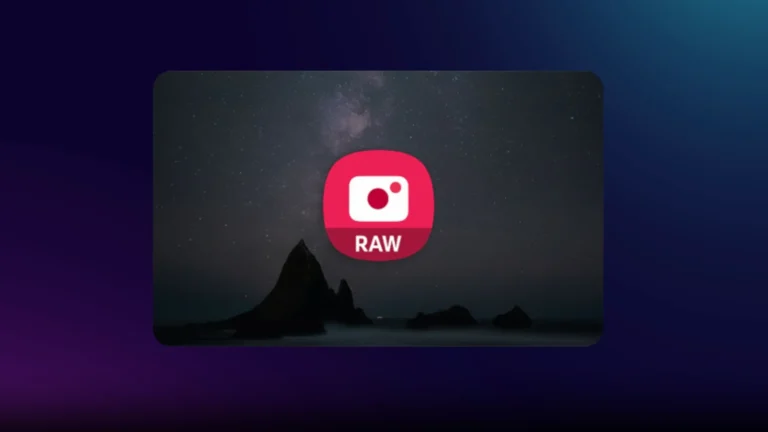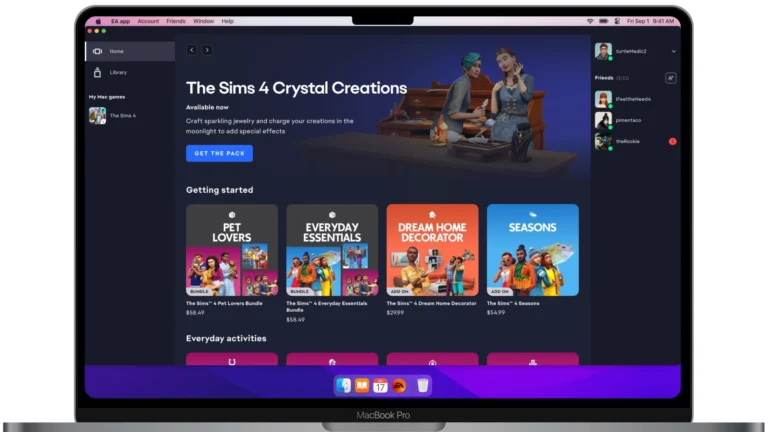
Text logos are one of the simplest yet most effective branding elements you can create for your business. Unlike complex graphic designs, a text-only logo focuses on typography to convey your brand’s personality and message. Creating a professional text logo doesn’t require advanced design skills or expensive software—you can make an impressive wordmark using free online tools like Adobe Express or BrandCrowd.
When designing a text logo, typography becomes your most powerful tool. The font you choose speaks volumes about your brand—serif fonts often convey tradition and reliability, while sans-serif options project modernity and simplicity. Look at successful text-only logos in your industry for inspiration, but aim to create something unique that will make your brand stand out and become memorable to your audience.
1. Understand What a Text Logo Is
A text logo (also called a wordmark) is a logo that uses only typography—your brand’s name, initials, or a word—without extra symbols or illustrations. Famous examples include Google, FedEx, and Coca-Cola.
The focus is on:
- Font choice
- Spacing and alignment
- Color palette
- Styling (bold, italic, custom shapes, etc.)
2. Choose the Right Font
Typography defines your brand’s personality. For example:
- Sans-serif fonts → modern, clean (e.g., Helvetica, Montserrat)
- Serif fonts → classic, trustworthy (e.g., Times New Roman, Playfair Display)
- Script fonts → elegant, creative (e.g., Pacifico, Great Vibes)
👉 Tools for finding fonts:
- Google Fonts – free, huge selection.
- DaFont – creative and decorative fonts.
- Adobe Fonts – premium, high-quality fonts for Adobe users.
3. Use Online Text Logo Makers (No Design Skills Needed)
These platforms let you type your brand name and instantly generate text-based logos you can customize:
- Looka – 5,000+ text logo templates, easy customization.
- LogoBean – quick text logo generator with font and color options.
- AI Logo Maker – AI-powered tool for creating professional text logos in minutes.
4. Design with Free Software (More Control)
If you want more creative freedom, try these design tools:
- Canva – drag-and-drop editor with text effects and logo templates.
- Figma – free vector design tool, great for precise typography adjustments.
- Inkscape – open-source vector software, similar to Adobe Illustrator.
- GIMP – free Photoshop alternative for raster-based text effects.
5. Professional Software (For Advanced Design)
If you’re comfortable with design tools:
- Adobe Illustrator – industry standard for logo design; perfect for scalable vector text logos.
- Affinity Designer – cheaper alternative to Illustrator with professional features.
6. Customize and Export
- Experiment with letter spacing, boldness, and alignment.
- Try color psychology (e.g., blue = trust, red = energy).
- Export in multiple formats:
- SVG (scalable, best for web and print)
- PNG (transparent background)
- PDF (for print)
✅ Pro Tip: Start simple. A clean, readable text logo often works better than something overly decorated.
Key Takeaways
- A well-designed text logo can effectively communicate your brand identity without requiring complex graphics or expensive design services.
- Typography choice is crucial as different font styles convey different brand personalities and messages to your audience.
- Online logo makers offer templates and customization tools that help you create professional text logos in minutes rather than hours.
Understanding the Fundamentals of Text Logos
Text logos are powerful brand identifiers that rely on typography to communicate your company’s essence. They form the cornerstone of visual identity that customers will associate with your products or services.
What Is a Text Logo?
A text logo is a type of logo design that primarily uses letters and words rather than symbols or icons to represent a brand. Unlike emblems or graphic logos, text logos (also called wordmarks or logotypes) focus on typography as the main design element.
Text logos can be:
- Simple: Using just the company name in a specific font
- Stylized: With custom letter shapes or modifications
- Combined: Text with minimal graphic elements
The font choice is critical in a text logo. As noted by design experts, “the font you choose can have a big impact on the overall look and feel” of your brand identity.
Text logos work well for companies with distinctive names or those wanting to build immediate name recognition.
Importance of Text in Branding
Text in your logo creates an immediate connection with your audience by literally spelling out who you are. This direct approach helps build brand recognition faster than abstract symbols alone.
The basic ingredients that make up a logo include colors, typeface, line, shape, and negative space – with text logos placing special emphasis on typography.
Text logos offer several advantages:
- Clarity: They clearly state your brand name
- Memorability: Words are often easier to recall than abstract symbols
- Versatility: They typically work well across different sizes and applications
Your text logo becomes the foundation of your brand identity system. It appears on everything from your website to business cards, creating consistency across all customer touchpoints.
When designed thoughtfully, your text logo can convey your brand personality and values just as effectively as a complex graphic.
Getting Started with Logo Design
Before diving into text logo creation, you need to understand what makes a successful design. The foundation of any great text logo lies in knowing your brand identity, selecting the right fonts, and leveraging color psychology.
Identifying Your Brand Identity
Your brand identity is the core of your text logo design. Start by defining your brand’s personality – is it professional, playful, luxurious, or minimalist? Write down 3-5 adjectives that describe how you want your brand to be perceived.
Research your target audience to understand what appeals to them. Different demographics respond to different styles of typography and colors.
Look at your competitors’ logos to identify industry trends, but also to find ways to stand out. What makes your brand unique? This distinctive quality should be reflected in your text logo design.
Create a simple mood board with images, colors, and existing logos that align with your vision. This visual reference will help guide your design decisions and keep your branding materials consistent.
Choosing the Right Font
Font selection is crucial for text logos as it communicates your brand’s personality before people even read the words. Fonts generally fall into these categories:
- Serif fonts: Traditional, established, trustworthy
- Sans serif fonts: Modern, clean, approachable
- Script fonts: Elegant, personal, creative
- Display fonts: Unique, attention-grabbing, distinctive
Limit yourself to 1-2 fonts maximum in your logo to maintain clarity. Many successful text logos use a single, well-chosen typeface.
Consider legibility across different sizes and platforms. Your logo needs to work well on business cards, websites, and possibly billboards.
You can modify existing fonts to create something unique. Simple adjustments to letter spacing, size variations, or custom touches to specific letters can make your text logo stand out.
Understanding Color Psychology
Colors evoke specific emotions and associations that can strengthen your brand message. Choose logo colors that align with your brand personality:
| Color | Psychological Association |
|---|---|
| Blue | Trust, reliability, professionalism |
| Red | Energy, passion, urgency |
| Yellow | Optimism, clarity, warmth |
| Green | Growth, health, tranquility |
| Black | Sophistication, authority, elegance |
Consider using the Adobe Express free logo generator to experiment with different color combinations before finalizing your design.
Remember that your logo may appear on various backgrounds, so test how it looks on light, dark, and colored backgrounds. A good text logo maintains its impact across different applications.
Limit your color palette to 1-3 colors for a clean, professional look. Too many colors can make your text logo appear cluttered and unprofessional.
Creating Your Text Logo Step by Step
Building a text logo requires attention to detail and a systematic approach. With the right tools and techniques, you can create a professional text logo that represents your brand effectively.
Sketching Initial Ideas
Start by brainstorming concepts for your text logo on paper. Quick sketches help you explore different possibilities without getting stuck on a single idea. Think about what makes your brand unique and how to express that through text.
Consider these questions when sketching:
- What feeling should your logo evoke?
- Is your brand playful, serious, elegant, or bold?
- What industry standards might influence your design?
Try creating 10-15 rough sketches. Don’t worry about perfection at this stage. Focus on generating a variety of ideas that capture your brand’s essence.
Use word association to inspire new directions. Write down keywords related to your business and let them guide your creative process.
Selecting Design Elements
Typography forms the foundation of a text-based logo. Choose fonts that match your brand personality – serif fonts convey tradition and reliability, while sans-serif fonts suggest modernity and simplicity.
Adobe Express’s text logo maker can help you experiment with different fonts quickly. Limit yourself to 1-2 font styles to maintain clarity and professionalism.
Color psychology plays a crucial role in logo design:
- Blue: Trust and dependability
- Red: Energy and passion
- Green: Growth and health
- Black: Sophistication and luxury
Consider these additional design elements:
- Letter spacing (kerning)
- Weight variations (bold/light)
- Special characters or ligatures
- Text case (uppercase tends to be more authoritative)
Refining the Layout and Composition
Arrange your text to create balance and visual interest. Simple text logos often work best as they’re more memorable and adaptable.
Test different alignments:
- Left-aligned for traditional looks
- Centered for symmetry and balance
- Stacked words for compact designs
Create visual hierarchy by varying text sizes if using multiple words. The most important word (usually your brand name) should be most prominent.
Experiment with negative space between letters to create hidden meanings or symbols. Many text-only logos use clever spacing techniques to add visual interest.
Ensure your logo is scalable by testing it at different sizes. A good text logo remains legible when printed on business cards or displayed on billboards.
Using Logo Design Software
The right software makes creating text logos easier and more professional. These tools offer templates, fonts, and color options that help your brand stand out.
Overview of Logo Design Tools
Several powerful tools can help you create stunning text logos. Adobe Express offers a free online text logo generator that works well for beginners. It lets you create custom logos in minutes regardless of your design experience.
For more advanced options, Illustrator provides professional-grade tools for text manipulation and creative effects. Many designers prefer it for its precision and versatility.
Free alternatives like Inkscape give you similar capabilities without the cost. Online platforms such as Looka offer guided design experiences with templates specifically for text-based logos.
When choosing your tool, consider:
- Your design experience level
- Budget constraints
- Time available for learning
- Specific features you need
Customizing Your Text Logo in Inkscape
Inkscape is a powerful free alternative to paid graphic design software. To start your text logo in Inkscape, select the Text tool and type your brand name. Then experiment with different fonts that match your brand’s personality.
You can customize your text by converting it to paths. Select your text and use Path > Object to Path. This transforms letters into shapes you can modify individually by adjusting nodes and curves.
Add depth to your design using Inkscape’s gradient tool. Select your text and apply linear or radial gradients to create dimension. This works especially well for making metallic or 3D effects in your logo.
For a more unique look, try letter spacing adjustments. Select your text and adjust the spacing between characters using the Text and Font dialog box. This simple change can dramatically affect your logo’s readability and style.
Finding the Right Color Palette
Color choices significantly impact how people perceive your brand. Limit your logo color selection to 1-3 colors for a clean, professional look. Too many colors can make text logos appear cluttered and unprofessional.
Consider color psychology when selecting your palette. Blue conveys trust and professionalism, while orange suggests creativity and enthusiasm. Research what emotions you want your brand to evoke before finalizing colors.
Use online color tools like Adobe Color or Coolors to find harmonious combinations. These tools help you create color schemes that work well together based on color theory principles.
Test your color choices across different backgrounds and sizes. A good text logo remains legible when printed in black and white or displayed at small sizes on mobile devices. Try viewing your design in grayscale to ensure it maintains its impact without color.
Finalizing and Vetting Your Text Logo
The final steps of creating your text logo are crucial to ensure it represents your brand effectively across all platforms. Taking time to properly finalize your design can save you from costly revisions and legal issues later.
Previewing Across Different Media
Test your text logo in various sizes and contexts before finalizing. Your logo should remain legible when scaled down for business cards and clear when enlarged for billboards.
Create mockups showing your logo on:
- Website headers and favicons
- Social media profiles
- Business cards and letterheads
- Product packaging
- Promotional items (t-shirts, pens)
Check how your text logo appears in black and white. A strong logo works well even without color. This ensures your brand remains recognizable in grayscale printing or faxes.
Consider how your logo displays on different backgrounds. Create versions with transparent backgrounds for maximum flexibility. Many designers recommend grouping all elements together in your final file to maintain consistency.
Legal Considerations and Trademarking
Before fully adopting your text logo, conduct a thorough trademark search. This helps avoid potential legal disputes with existing brands using similar designs.
Steps to protect your text logo:
- Search the USPTO database for similar registered trademarks
- Consult with a trademark attorney if your budget allows
- Register your logo as a trademark for legal protection
- Document your design process and creation date
Remember that fonts may have licensing restrictions. Ensure you have proper licenses for commercial use of any typefaces in your text logo. For maximum legal protection, consider outlining your fonts in your final design files.
Create a simple brand guide documenting acceptable logo uses and modifications to maintain control of your brand identity.
Receiving Feedback and Revisions
Gather opinions from different perspectives before finalizing your text logo. Share your design with target audience members, colleagues, and design professionals.
Ask specific questions like:
- Is the text easily readable?
- Does it communicate your brand values?
- Is it memorable and distinctive?
- Does it work well at different sizes?
Use online tools to create quick polls or A/B tests comparing different versions. This provides quantitative data to support your decision-making.
Limit revision rounds to prevent “design by committee” issues. While feedback is valuable, maintain your original vision and brand goals. Make a final selection based on alignment with your brand strategy rather than personal preferences.
After finalizing, create multiple file formats (PNG, SVG, PDF) and color variations for different applications.
Leveraging Your Logo for Marketing
Your text logo is a powerful marketing asset that can drive brand recognition and customer loyalty. When used strategically across different channels, it creates a cohesive brand experience that customers remember.
Integrating Logo into Marketing Materials
Start by adding your text logo to all essential marketing materials. Include it on business cards, letterheads, email signatures, and product packaging. This consistent presence reinforces your brand identity with every customer interaction.
For digital channels, adjust your logo size and format to fit different platforms while maintaining its core design elements. Consider creating a “logo kit” with different versions (full color, monochrome, horizontal, and vertical layouts) to ensure you’re always ready for any application.
When designing presentations or proposals, place your logo in a consistent position on each page. This repetition builds familiarity and trust with your audience.
Don’t forget promotional items! Branded merchandise like pens, t-shirts, and tote bags turn customers into walking advertisements for your business.
Expanding Brand Visibility
To maximize your logo’s impact, place it strategically on your website. The upper left corner is typically most effective as it’s where visitors look first. Ensure your logo links back to your homepage—a standard practice users expect.
Social media profiles benefit greatly from consistent logo use. Make your text logo your profile picture across platforms to create a memorable presence online. Consider creating custom social media templates that incorporate your logo design elements.
Partner with complementary businesses for co-marketing opportunities. Your logo appearing alongside established brands can boost your credibility and reach new audiences.
For physical locations, display your logo prominently on signage, window decals, and interior design elements. This creates an immersive brand experience that customers will remember and associate with your products or services.
Exploring Free and Paid Logo Makers
Creating a text logo involves choosing between self-service tools and professional design services. Your budget, timeline, and brand goals will heavily influence which option works best for your needs.
Benefits of Free Logo Maker Tools
Free logo makers offer immediate accessibility with no upfront cost. You can create a basic text logo in minutes without design experience or specialized software.
Most logo tools provide customizable templates with various fonts, colors, and simple graphic elements. These platforms typically include:
- User-friendly drag-and-drop interfaces
- Pre-designed templates for different industries
- Basic typography and color options
- One-click downloads in multiple file formats
Adobe Express and Canva stand out with their extensive template libraries. Shopify’s logo maker generates high-resolution files suitable for both digital and print applications.
Free tools work best for startups, small businesses, and personal projects with limited budgets. They provide quick solutions when you need a simple text logo for immediate use.
Investing in Professional Logo Design Services
Professional logo designers bring expertise that automated tools cannot match. They create unique brand identity elements that stand apart from template-based designs.
Working with a professional logo designer offers several advantages:
- Custom typography tailored to your brand voice
- Strategic color selection based on psychology and industry standards
- Exclusive designs that won’t be used by competitors
- Multiple concept options and revision rounds
- Comprehensive file formats for all applications
Professional designers conduct market research to ensure your text logo resonates with your target audience. They consider factors like scalability, reproduction limitations, and cross-platform performance.
This investment typically ranges from $300 to $2,500+ depending on the designer’s experience and deliverables included. For established businesses or those seeking investor funding, professional design services provide credibility that free options cannot.
Frequently Asked Questions
Creating a text logo involves several key decisions about fonts, colors, and design approach. Here are answers to common questions people have when making their own text logos.
What are the steps to create a text-based logo from scratch?
To make a text logo from scratch, start by choosing a logo font that matches your brand personality. This is the foundation of your text logo.
Next, decide on a design layout that works for your business name. Short names might work well on one line, while longer names might need multiple lines or creative arrangements.
Then add your text to your working space and customize the typography. You might adjust spacing between letters, size, or weight of the font.
Finally, select colors that represent your brand and finalize your design. Make sure to save it in multiple formats for different uses.
Is it possible to design a text logo without any cost?
Yes, you can create a text logo completely free using several online tools. Many platforms offer free basic logo creation services.
Adobe Express provides a free online text logo generator that helps beginners create custom logos quickly. You don’t need design experience to use it.
Other free options include Canva’s free tier and LogoMaker’s basic services. These tools offer templates and customization options without requiring payment.
Remember that free options may have limitations on commercial usage rights or export quality. Check the terms before using your logo commercially.
Which online tools are best for generating text logos automatically?
Adobe Express is considered one of the best automatic text logo generators for all skill levels. It offers extensive customization options despite being user-friendly.
Canva provides excellent templates and an intuitive interface that makes text logo creation simple. Their drag-and-drop features work well for beginners.
LogoMaker offers a straightforward process where you fill out information about your business, including industry and company name, then click “Make a Logo” to generate options.
Wix Logo Maker uses AI to suggest designs based on your preferences and industry. This can save time in the initial design phase.
How can I convert my text into a professional logo format?
To convert text into a professional logo format, start by finalizing your design in a vector-based program like Adobe Illustrator or a simpler online tool like Canva Pro.
Save your logo in multiple formats including PNG (with transparent background), JPEG, SVG, and PDF. Vector formats like SVG or AI files allow scaling without quality loss.
Ensure you create variations for different usage scenarios—horizontal layouts, square versions, and versions that work on both light and dark backgrounds. This flexibility is essential for professional branding.
What are the tips for choosing the right font for a text logo?
When selecting a font, consider your brand personality first. Serif fonts convey tradition and reliability, while sans-serif fonts appear modern and clean.
Limit yourself to 1-2 fonts maximum in your logo. Creating contrast between different parts of your company name can help certain elements stand out.
Test readability at different sizes. Your logo should remain legible when very small (like on a business card) or very large (like on a billboard).
Avoid trendy fonts that might look dated quickly. A good logo font should have staying power for years to come.
Are there any AI-powered tools for creating text logos, and are they effective?
Yes, several AI-powered tools now exist for creating text logos. Wix Logo Maker uses artificial intelligence to generate custom logo options based on your industry and preferences.
Looka (formerly Logojoy) utilizes AI to create multiple design options after you input your preferences. The system learns from your choices to offer better alternatives.
These AI tools are especially effective for generating initial concepts quickly. They can produce dozens of starting points in seconds, which would take a human designer much longer.
The effectiveness depends on your needs. AI tools work well for simple text logos but may lack the nuance a professional designer brings for complex concepts or specific brand visions.






